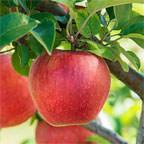- Q.Why Have Some Leaves On My Contoneaster Lactus Hedge Turned White? - In last few days I’ve noticed some leaves (particularly at bottom of hedge) on my 6 foot cotoneaster lactus hedge ...
- Q.If I Cut The Top Off An Old Cotoneaster Will It Grow From The Bottom? - I have a very old cotoneaster that has no foliage on the bottom 3 feet. The top is very vigorous ...
- Q.Clover Growing Through Cotoneaster - I have a large excavated area, which has been planted out in cotoneaster to stabilise it. It has been invaded ...
- Q.Can You Please Tell Me What Is Causing This To My Cotoneaster? - It’s part of my hedge and 20 years old
- Q.Tom Thumb Cotoneaster Looks Good When Planted But Does Dies In A Short Time. Planted In Full Sun/partial Shade/ Well Drained Soi - l. This planting and dying has happened two years in a row? Although it is early in the season, it ...
- Q.My Cotoneaster Seems To Be Getting Smothered By Spider Webs, What Can I Do To Stop This? - The cotoneaster has been in our garden for at least 28 years and suddenly, this year, it is covered in ...
Q.Why Have Some Leaves On My Contoneaster Lactus Hedge Turned White?
In last few days I’ve noticed some leaves (particularly at bottom of hedge) on my 6 foot cotoneaster lactus hedge have turned/are turning white. Hedge is 8 years old and has always grown well. We live by the coast but hedge is sheltered by the house.
- A.
This looks to be an iron deficiency. I would check for deficiency or pH swings, which can cause deficiency-like symptoms.
Here are some articles that will help:
https://www.gardeningknowhow.com/garden-how-to/soil-fertilizers/testing-soil.htm
https://www.gardeningknowhow.com/garden-how-to/soil-fertilizers/soil-ph-plants.htm
https://www.gardeningknowhow.com/ornamental/shrubs/cotoneaster/how-to-grow-cotoneaster.htm
Was this answer useful?00
Q.If I cut the top off an old cotoneaster will it grow from the bottom?
I have a very old cotoneaster that has no foliage on the bottom 3 feet. The top is very vigorous but arches over other plants and keeps them in the dark. It is in a relatively small border. If I cut off the top growth will the plant shoot again from the old wood?
- A.
It's tough to say whether the tree will sprout from the old wood at the bottom because the cotoneaster naturally shapes itself as you're seeing it now. My guess is it will continue to flourish at the top. However, those long branches can certainly be pruned back. I am adding links to a couple articles that may help:
https://www.gardeningknowhow.com/ornamental/shrubs/cotoneaster/pruning-cotoneaster-shrubs.htm
https://www.gardeningknowhow.com/ornamental/trees/tgen/damage-from-over-pruning.htmWas this answer useful?00 Q.Clover Growing Through Cotoneaster
I have a large excavated area, which has been planted out in cotoneaster to stabilise it. It has been invaded by white clover, which I cannot spray, as I do not want to kill the cotoneaster. Please, any suggestions how to eradicate the clover? Hand-pulling is not an option. Thank you.
- A.
It would seem that the only, viable, option will be mulching! Heavy mulching can smother the clover, but do be careful about watering. Mulching will increase the time it takes the soil to dry out, so make sure that you compensate for this fact.
https://www.gardeningknowhow.com/plant-problems/weeds/getting-rid-white-clover.htm
https://www.gardeningknowhow.com/garden-how-to/mulch/best-mulch-for-garden.htm
https://www.gardeningknowhow.com/garden-how-to/mulch/using-inorganic-mulch-in-gardens.htm
Another option is to leave the clover. They will keep the Cotoneaster well fed with nitrogen, while keeping all other weeds away.
https://www.gardeningknowhow.com/edible/grains/cover-crops/cover-crops-for-clay-soil.htm
https://www.gardeningknowhow.com/edible/grains/cover-crops/living-mulch-ground-cover.htm
Was this answer useful?00 Q.Can You Please Tell Me What Is Causing This To My Cotoneaster?
It’s part of my hedge and 20 years old
- A.
It looks like lichens, which are often on trees. They are harmless and need no intervention.
https://www.gardeningknowhow.com/ornamental/fungus-lichen/treatment-tree-lichen.htm
Was this answer useful?00 Q.Tom Thumb Cotoneaster Looks Good When Planted But Does Dies In A Short Time. Planted In Full Sun/partial Shade/ Well Drained Soi
l. This planting and dying has happened two years in a row? Although it is early in the season, it appears that the plants planted last year have not survived. Branches are dry and brittle. Could something in the soil be causing this problem. I like the plants but am hesitant to spend any more money replacing them.
- A.
This will have two causes, mainly. Typically, moist soils will cause them to die, fairly, quickly. They prefer things on the dry side. When transplanting, it is necessary to allow the soil to dry out, thoroughly, between waterings. Keeping the soil moist with this plant will not be appropriate.
If this is not the case, and you know for a fact that the soil dries out thoroughly, then it could be a disease. There are many soil borne diseases.
You can take your soil samples to your nearest extension service, however. They can test it for you.
https://www.gardeningknowhow.com/garden-how-to/soil-fertilizers/test-soil-for-pests-and-diseases.htm
https://www.gardeningknowhow.com/extension-search
https://www.gardeningknowhow.com/ornamental/shrubs/cotoneaster/how-to-grow-cotoneaster.htm
Was this answer useful?00 Q.My Cotoneaster Seems To Be Getting Smothered By Spider Webs, What Can I Do To Stop This?
The cotoneaster has been in our garden for at least 28 years and suddenly, this year, it is covered in lots of spiders webs. The right hand side of the plant has started to die off and the leaves have gone brown and are falling off.
- A.
It's probably not garden spiders because they wouldn't hurt the plants. But spider mites, too tiny to see, can damage plants. Here is more:
https://www.gardeningknowhow.com/plant-problems/pests/insects/spider-mite-treatment.htm
Was this answer useful?00



